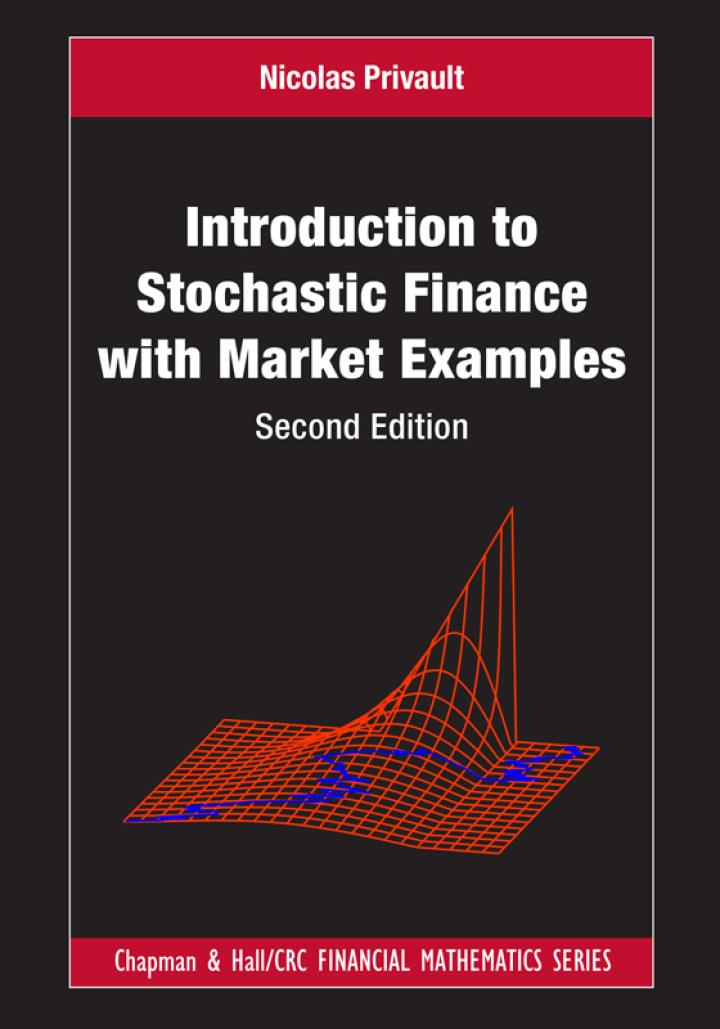Let (left(B_{t}ight)_{t in mathbb{R}_{+}})denote a standard Brownian motion generating the filtration (left(mathcal{F}_{t}ight)_{t in mathbb{R}_{+}}). a) Letting (X_{t}:=sigma
Question:
Let \(\left(B_{t}ight)_{t \in \mathbb{R}_{+}}\)denote a standard Brownian motion generating the filtration \(\left(\mathcal{F}_{t}ight)_{t \in \mathbb{R}_{+}}\).
a) Letting \(X_{t}:=\sigma B_{t}+u t, \sigma>0, u \in \mathbb{R}\), compute \(S_{t}:=\mathrm{e}^{X_{t}}\) by the Itô formula
\[
\begin{equation*}
f\left(X_{t}ight)=f\left(X_{0}ight)+\int_{0}^{t} u_{s} \frac{\partial f}{\partial x}\left(X_{s}ight) d B_{s}+\int_{0}^{t} v_{s} \frac{\partial f}{\partial x}\left(X_{s}ight) d s+\frac{1}{2} \int_{0}^{t} u_{s}^{2} \frac{\partial^{2} f}{\partial x^{2}}\left(X_{s}ight) d s \tag{5.26}
\end{equation*}
\]
applied to \(f(x)=\mathrm{e}^{x}\), by writing \(X_{t}\) as \(X_{t}=X_{0}+\int_{0}^{t} u_{s} d B_{s}+\int_{0}^{t} v_{s} d s\).
b) Let \(r>0\). For which value of \(u\) does \(\left(S_{t}ight)_{t \in \mathbb{R}_{+}}\)satisfy the stochastic differential equation \[
d S_{t}=r S_{t} d t+\sigma S_{t} d B_{t} \quad ?
\]
c) Given \(\sigma>0\), let \(X_{t}:=\left(B_{T}-B_{t}ight) \sigma\), and compute \(\operatorname{Var}\left[X_{t}ight], 0 \leqslant t \leqslant T\).
d) Let the process \(\left(S_{t}ight)_{t \in \mathbb{R}_{+}}\)be defined by \(S_{t}=S_{0} \mathrm{e}^{\sigma B_{t}+u t}, t \geqslant 0\). Show that the conditional probability that \(S_{T}>K\) given \(S_{t}=x\) can be computed as \[
\mathbb{P}\left(S_{T}>K \mid S_{t}=xight)=\Phi\left(\frac{\log (x / K)+(T-t) u}{\sigma \sqrt{T-t}}ight), \quad 0 \leqslant t
S_{T}=S_{t} \frac{S_{T}}{S_{t}}=S_{t} \mathrm{e}^{\left(B_{T}-B_{t}ight) \sigma+(T-t) u}, \quad 0 \leqslant t \leqslant T \]
Step by Step Answer:

Introduction To Stochastic Finance With Market Examples
ISBN: 9781032288277
2nd Edition
Authors: Nicolas Privault





